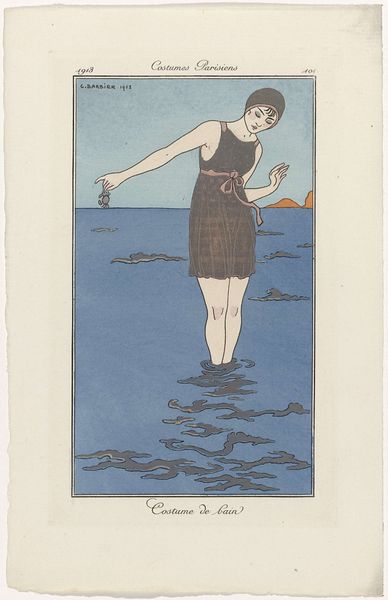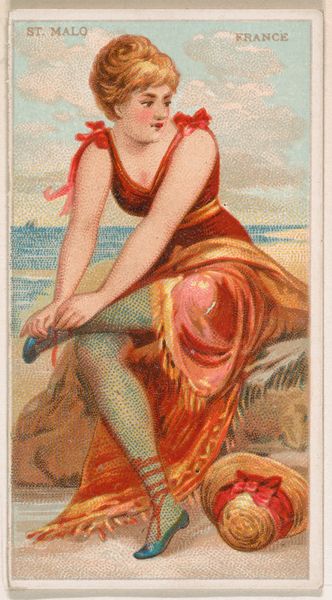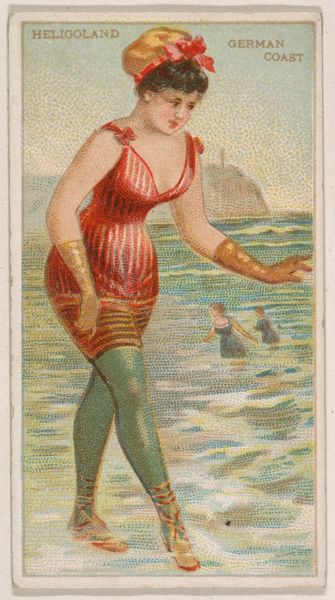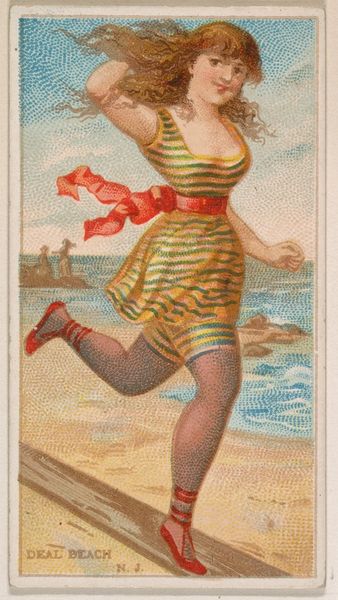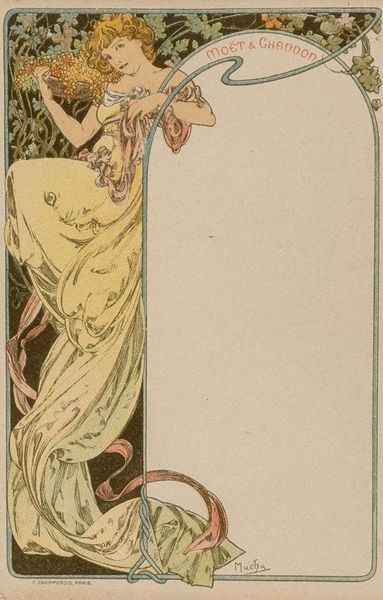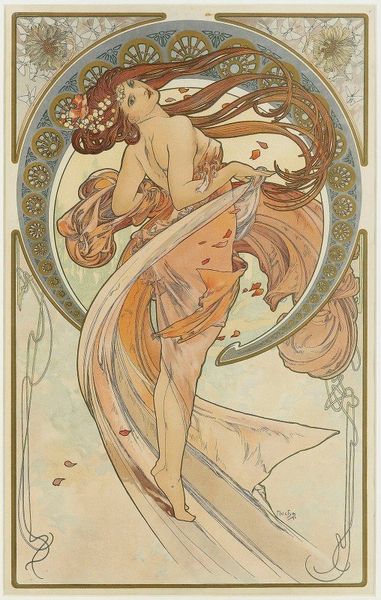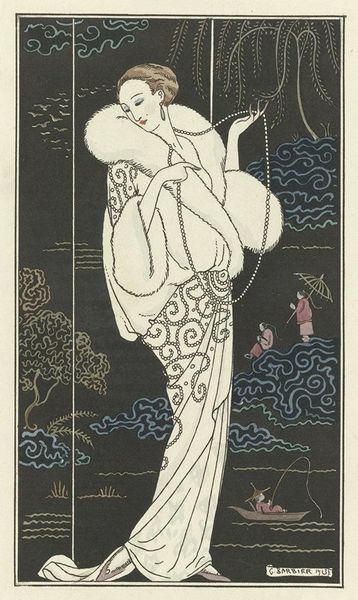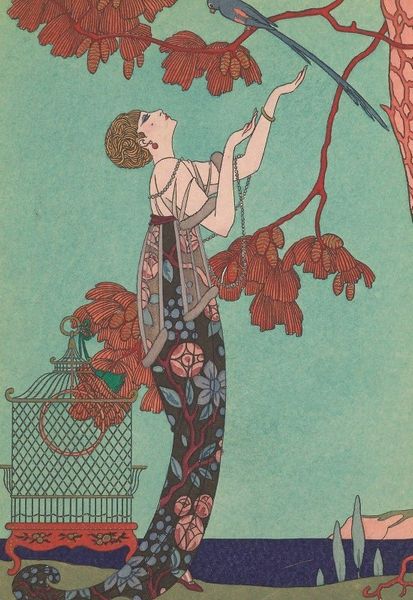
watercolor
#
art-nouveau
#
blue ink drawing
#
landscape
#
figuration
#
watercolor
#
symbolism
#
watercolour illustration
#
erotic-art
Copyright: Public Domain: Artvee
Curator: This watercolor illustration, titled "Costume de bain," was created by George Barbier in 1913. The soft hues and elegant lines are quite striking, don’t you think? Editor: It feels like a dream. Ethereal. There’s something so serene and still about the piece, despite the figure wading in the water. It’s also kind of wistful, perhaps because of her contemplative gaze downward. Curator: Barbier’s figures often evoke that sense of gentle melancholy. The woman standing in the sea holding a tiny crab might symbolize vulnerability or perhaps even a connection to nature's fragility, a common theme in symbolism of that period. Editor: I'm interested in the social context too. Around 1913, ideas around leisure, female liberation, and even representations of the body were being actively negotiated. Depicting a woman in a bathing costume and participating in outdoor activities signaled changing attitudes, reflecting a progressive, modern vision of womanhood taking shape, while simultaneously hinting at emergent erotic art. Curator: That’s a crucial observation. The art nouveau aesthetic, visible in the fluid lines and decorative details, contributes to that idealized vision while subtly amplifying the emotional message, almost in anticipation of the shift into art deco and its sharper vision. Note also the water, both liminal and transitional, echoing transformations in society at the time. Editor: I can see that. And the simplified composition – just the sea, the sky, the figure – almost emphasizes her individual experience. It invites us to consider the experience of being in such a setting, on the cusp of significant social change. Was it an ideal or reality, and for whom? Curator: Precisely. The deliberate choice of watercolor contributes as well. It conveys a sense of lightness and transience. Its ability to be both transparent and layered resonates well with the shifting nuances in meaning that are at play here. Editor: It seems to act as both a mirror reflecting progress and a filter tempering it with delicacy and care. Thinking about how artists reflected the era through everyday subjects makes me wonder about art's future role during transition today. Curator: I agree completely; It’s artworks like "Costume de bain" that allow us to appreciate how symbolism intertwines with culture and resonates even generations later.
Comments
No comments
Be the first to comment and join the conversation on the ultimate creative platform.
